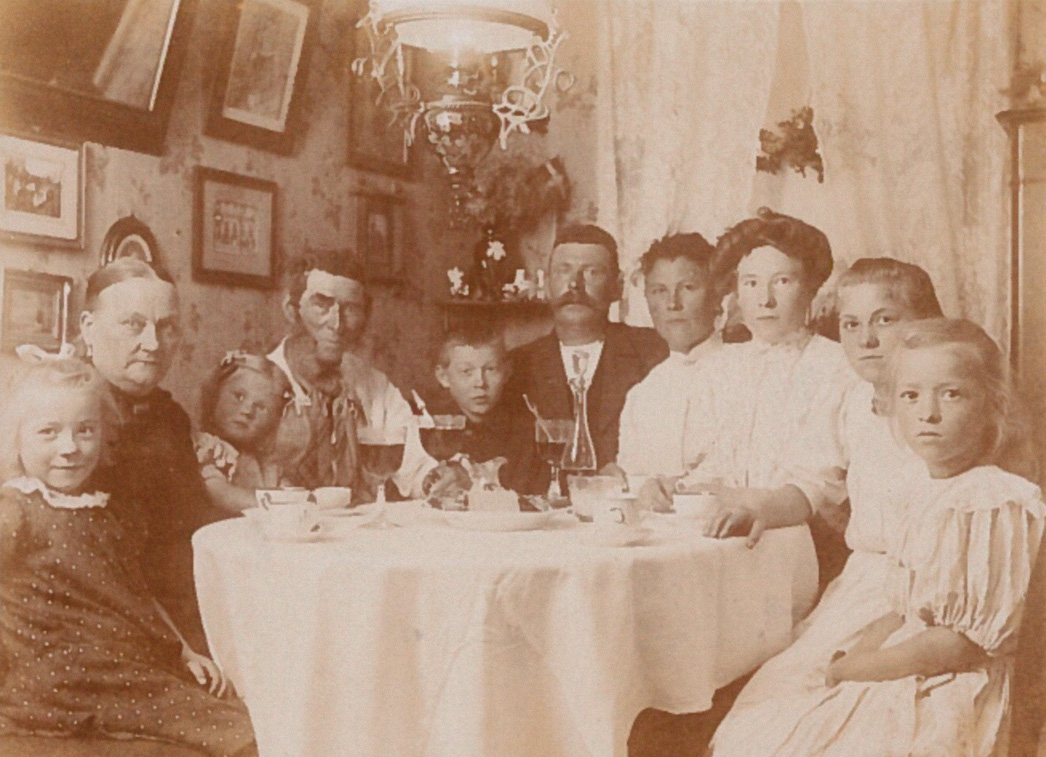
Scaffolders
Photo: Unknown, Danmarks Kunstbibliotek
Construction
After the cholera epidemic had raged through the working-class districts of Copenhagen, the connection between poor housing conditions and illness became evident. Thus, in 1853, the Danish Medical Association built model lodgings outside the embankments of Copenhagen on Østerfælled. Here, systematic sanitation measures resulted in a building layout with ample space and fresh air between the blocks, plenty of light, as well as clean drinking water.
Construction
After the cholera epidemic had raged through the working-class districts of Copenhagen, the connection between poor housing conditions and illness became evident. Thus, in 1853, the Danish Medical Association built model lodgings outside the embankments of Copenhagen on Østerfælled. Here, systematic sanitation measures resulted in a building layout with ample space and fresh air between the blocks, plenty of light, as well as clean drinking water.

Between the blocks
Photo: Unknown, Københavns, Museum
Community Experiment
After the cholera epidemic in Copenhagen had claimed 4,743 lives, a circle of philanthropic physicians initiated a housing project of healthy and low-priced homes for the poor classes outside the ramparts of Copenhagen.
In 1855, the tenants included 53 artisans, 28 labourers, 18 widows and 21 others, such as sailors. Later, in 1875, there were 204 artisans, 202 labourers, 138 widows and unmarried women (seamstresses, factory workers, washerwomen, and foster mothers), and 56 others. During its heyday, the community accommodated approximately 2,000 people, including 800 children.
Limited to a small area, the homogenous population proved to be a perfect project for the philanthropic physicians to test initiatives. A supervisor and several caretakers observed the residents’ daily activities. Failure to pay rent on time and cases of disorder resulted in eviction. The physicians observed the health conditions closely, every year reporting to The Ministry of Interior about the development of epidemics and infant mortality.
The community served the purpose of improving the health conditions and moral standards of the poor as well as preventing the inherent fear of an unruly proletariat.
„Fresh Air, Soap, and Water“
The Fight against Poverty
As one of the founders of Brumleby, Emil Hornemann worked as a physician in the community. He fought against the, in his opinion, causes of poverty and illness: intemperance, uncleanliness, and immorality. Brumleby provided the setting for a healthy life, but the residents’ – especially the homemakers’ – behaviour had to be modified, in turn allowing them to realise that they themselves were chiefly responsible for avoiding poverty.

The Hørbye family dining
Mrs. Flinch and Mrs. Sørensen
In a book revised from English, Hornemann uses the fairy-tale formula as an educational tool to convey his ideals. In the story, the water, the soap, and the air discuss: ‘United we could … prevent both illness and poverty’. The two Brumleby neighbours, Mrs. Flinch and Mrs. Sørensen, are the central characters. While one of them runs an impeccable household, has a sober husband and well-behaved children, the other is messy, has dirty children, and a husband who drinks. Mrs. Sørensen is jealous of Mrs. Flinch and is advised to tackle the issue with ‘fresh air, plenty of soap and water, and a little trouble’.


